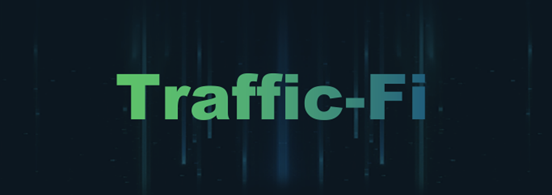Looking back at the power structure of the entire flux economy, people will naturally associate it with patch ads, banner ads, live commerce and other typical operations, and perhaps several social media influencers' artificial faces.
It seems as if users are always the passive recipients and victims of advertising, while content creators are suspected of conspiring with the platform to drain consumers' wallets. Is this really the case? If so, should it be like this in the Web3 discourse system?
1. Flux Economy Discourse System in Web2
Traffic has long since become one of the hard indicators for measuring Internet companies. In the Web2 discourse system, Internet companies can earn as much as they would within a decade thanks to the boosted flux economy, which continues to drive the "short-lived top-selling" logic spread to the entire industry.
The platform continues to reward content creators who can produce high viewership, so what about retention? Well, the platform only considers the retention of users across the whole platform. Individual content creators come and go, but it doesn't matter if they don't reach phenomenal levels. Continued retention has become the subject of the latter KOLs themselves.
A set of mature business modes of live commerce has existed in Tiktok, Kwai, Bilibili, RED for a long time. Tiktok and Kwai, as short video platforms, have a higher number of live commerce relevant accounts than Bilibili and RED.

For the content producers on these platforms, the means to monetise their popularity have been quite rich, including live commerce, hanging wechat small programs, star map promotion, consulting, training, advertisements and so on. As the infrastructure provider of the whole set of services, the platform has been exploiting part of the content producers' revenue through commission and showing app opening screen & infomercial ads.
This is not only a matter of form. In most cases, it's also reflected in the abyss of platform indexes. In the traditional UGC video network with more medium-length and long videos, the time spent by the creators is longer and the amount of attention resources consumed by the users is higher, which should have required the platform to spend more money accordingly, just like youtube, to compensate outstanding creators and run the flux economy in a sustainable and fair way.
Actually, the current medium-length video platform incentive program only offers lower revenue than the marketing cost at a normal conversion rate. Since the revenue generated by the rise in unit play volume is significantly less than the cost of buying play volume (traffic business), and the completion rate performance depresses video revenue, the creation environment deteriorates.
On one hand, the monthly income of content producers who boast hundreds of thousands of fans can not even support themselves. On the other hand, cross-platform video plagiarism made the situation much more severe. So in the platform flow economy, not only the users but also the content creators (and thus KOLs, projects) are offered "competitive market returns" by the platform.
2. Existing Web3 Marketing Approach
Web3 narrative should lay a tone on decentralization, but the market didn't offer any Web3 guidelines of "what is within or out of the scope of decentralized narrative". Concluding from the past market performance, the flux economy relies heavily on traditional social media, where the Internet traffic needs to be bought and retweeted. Also, projects can take decentralized media as a marketing alternative, at the cost of creator incentive lack.
Specifically, Twitter, which is used regularly as a marketing tool by KOLs and projects, is a Web2 social media. Parallelly, much of the current decentralized traffic is on Discord, which didn't become a marketing route independent of Twitter. Discord only converts existing followers to decentralized social media and never has the effect of introducing new traffic into a project at this stage.
As a result, the need for Discord is limited to claiming "we have a decentralized autonomous organization", which means the origin (marketing) has been overwhelmed by the purpose of building a reputation in Web3 and promoting the spirit of decentralization. Perhaps we all understand that the Discord community is born from Twitter, but how different is this from dragging people from Youtube and Telegram to Onlyfans?

The problem with approaches like Discord is not only their deliberateness, but also the costs of switching between projects back and forth. Referring to Web2's experience, it is easy to conclude that Twitter and Discord require "click on community channel/KOL's post - view the content - exit the page - change to next channel/community/KOL's post".
It's painful for people who browse lots of information every day. It feels like commuting in the flow of information, waiting for red signals to turn green for ten seconds every time you click your mouse or pad. In the Web2 world, short video applications have disrupted the annoying traffic rule, and the Abouts of Web2 platforms have been given above.
In this sense, we can interpret the problem of Web3 marketing as the trade-off between the diligent experience of information flow and the degree of centralization of the flux economy model. Although all projects have made efforts in this area, it is still a drop in the bucket. We need a one-stop solution, and this is the methodology of Traffic-Fi.
3. Traffic-Fi: A Brand New Fi Ecosystem
In the Web3 world, traffic is still the starting point of all Fi's, and Fi methods take traffic as the given condition, but none of them are solving the problems of quality, incentive, and voice of traffic itself. Only by returning the value of data to data producers and allocating attention resources to those who reasonably motivate users can the entire Web3 flux economy reach a new steady state in which platforms are hollowed out to the greatest extent and users and content producers (creators, project owners, KOLs) occupy the dominant position in the allocation of attention resources and revenue.
The solution to achieve this homeostasis is Traffic-Fi, a new Fi ecosystem.
In a Traffic-Fi protocol, users' attention resources belong to them and only them. In the Web2 discourse system, users only passively watch patch ads and opening screen ads, an act that only profits the platform and deprives it of attention. In the Traffic-Fi protocol, however, the viewing of any exogenously valuable film or text with a specific purpose is compensated for the consumption of attention resources. Users can choose to access certain information at their own discretion while allowing themselves to benefit from paying attention resources. Here, the right to be uninformed and non-obligatory is the most user-friendly component of the Traffic-Fi protocol in Web3.
It is worth mentioning that with the short video-like swipe-to-switch approach, the content platform under the Traffic-Fi protocol will significantly reduce the discomfort of viewing information so that you will not be interrupted by short lags and long loading times in the complex flow of information.
In a Traffic-Fi protocol, content producers no longer act as "traffic carriers". Users enter the platform based on their own demand for information and unlock a huge amount of content (including graphics, videos, etc.) to get revenue and new information. Based on the incentive mechanism of the platform for content producers and users under the Traffic-Fi protocol, the audience of information delivered by content producers will be extended to the whole group of users who are motivated to obtain revenue, which changes the behavior of content producers from existing "traffic carrying" to the most realistic flux economy in the new Web3 Real Marketing.

Web2 platforms lay heavy "taxes" on users and content producers as comprehensive (or domain-specific) entertainment platforms, which make no contributions to project owners who aim to market their projects on the platform. Contrarily, it requires early-stage projects to pay a non-negligible amount for marketing; even for KOL collaborations, the pitching costs, schedule planning, and results measurement of any team seeking to collaborate is killing the team's efficiency.
Platforms based on the Traffi-Fi protocol will make a difference. The resource allocation approach of the Traffic-Fi protocol allows platforms to hand back the revenue dominance to advertisers (brands, project owners, individual creators) who are the carriers of exogenous value. Through the market-based pricing of users' attention resources and the aggregated project owners & KOL network, content producers can efficiently determine the value of users' behavioral data and manage content promotion and traffic marketing in a one-stop manner.
In a word, Traffic-Fi can monetize the attention resources of users so that they can literally own their information acquisition behaviors and avoid being overwhelmed by the information flow. For project owners, Traffic-Fi provides a one-stop and low-cost manner to always bring real and new traffic into the project, which ensures a marvelous marketing effect.
Media Contact
Company Name: Knowhere
Contact Person: Airkin Wu
Email: Send Email
Country: Singapore
Website: knowhere.io/

